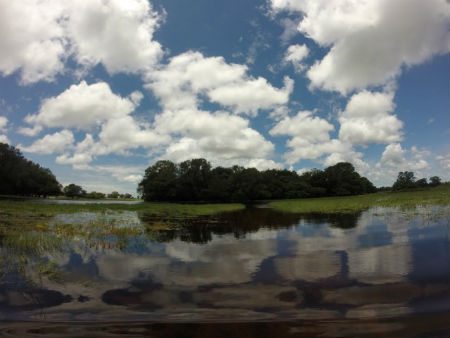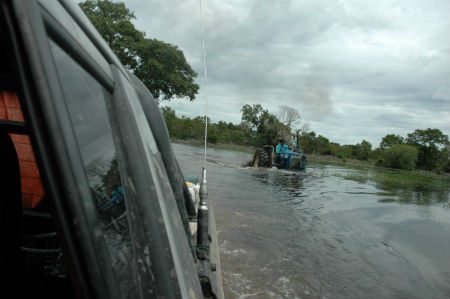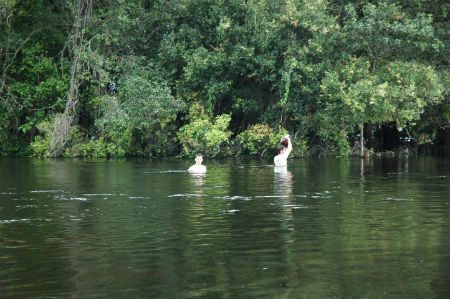We have received another update from our field partners at the Giant Armadillo Conservation project in Brazil. The project is working in two sites: the Pantanal and Cerrado. Arnaud Desbiez, founder and project coordinator, has sent us an update from each of the field sites. This first update is from the Pantanal, where things are looking just a touch soggy…
“In the Pantanal we have a long term study on the ecology, epidemiology, genetics of giant armadillos while in the Cerrado we are mapping the distribution of the species.
Pantanal
“In January our team set out to the Pantanal to check on our monitored giant armadillos and giant anteaters at the Baia das Pedras Ranch. It had not rained for a couple of weeks and they easily reached the ranch, however, once they got there it started raining non-stop.
“This made work difficult as our equipment is sensitive to humidity; the GPS receiver will be ruined if it gets wet, it becomes difficult to check cameras and everything is slowed down.
“They managed to check on the animals and get the relevant data but there were times they simply had to wait for the rain to stop. It never did! Luckily I was still able to maintain communication with them. I contacted ranches in the area to see if we could hire a tractor to guide them out of the ranch as the Pantanal was becoming alarmingly flooded. Unfortunately, no tractor was available and no one was coming in or out of the area. Worst of all, I learned that one of the wooden bridges we rely on to get out of the Pantanal got washed out and could take several days or weeks to repair. I therefore had to hire a small plane to fly out and rescue the team while leaving our truck at the ranch. Thanks goodness we have contingency funds in our budget!
“It continued to rain for several days after they left the ranch so it was such a relief to have everyone back safe and sound.

“Towards February we urgently needed to return to the ranch as the GPS units fixed on the giant armadillos were about to drop off the animals and run out of battery, making them impossible to locate. We had to rent a truck with a driver to take a couple of members of the team to the ranch since the truck was stranded there.

“Work was challenging to say the least. Our study area is divided in half by a flood plain which had overflowed making it impossible to cross by truck. This meant they had to swim across it and do all the work on foot or with a quad bike which they managed to float across.
“Water levels were at a record high and only the forested areas remained relatively dry. Murundum islands which are small elevations characterized by a central termite mound and Cerrado type vegetation were all flooded. These areas are actually the giant armadillo’s favourite type of habitat. All the monitored animals were now using only the thin dry forest strips as all the burrows in other areas were flooded. Two out of three GPS units were retrieved. However the GPS unit belonging to Houdini was silent.

“Gabriel searched and searched for several days. He went to all the last burrows Houdini had used and most of them were flooded. We believe that the GPS unit fell off in one of these burrows and stopped working when it remained submerged for several days. What a huge loss of data. If you consider the expense of the GPS, time and effort it is to catch him (we had not caught him in over a year), the loss of this precious data is a real blow to our efforts. We were all crushed.
“Due to the floods we plan to return to the Pantanal later in the year – as I write this report the flood plain continues to be impossible to cross and I worry that we may still not be able to access this part of our study area.”
Keep an eye on the blog tomorrow for another update from the Giant Armadillo Project team, telling us more about their plans for the future.